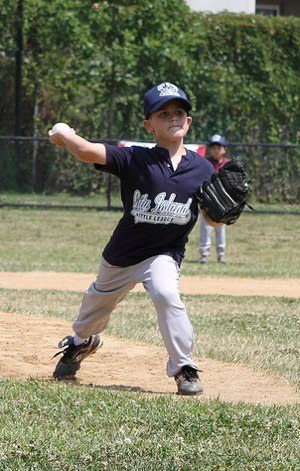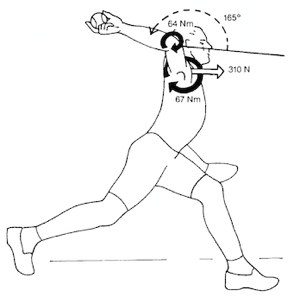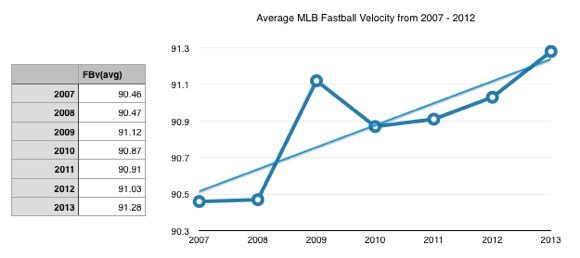The baseball season is only a few weeks old and we’ve already seen an impressive amount of MLB pitchers need Tommy John surgery. This pace could lead to a record breaking amount of injured pitchers. While many have speculated about the causes of this rise, I wanted to share my perspective as someone that has worked with 1000’s of healthy and injured players from Little League to Major League Baseball.
Injuries Are Higher in the First Month of Season
It’s probably not going to be as bad as we think. The big league trends have been studied and have shown that MLB injuries are higher in the first month of the season. I feel like every year at this time we all comment on how Tommy John surgeries are on the rise and will reach new records. Over the course of the season, this tends to slow down and even out.
Looking at the amount of Tommy John surgeries over the last decade, the number per year is fairly consistent, especially if you consider 2012 an anomaly. Sports Illustrated showed a nice graph of this recently. Perhaps this year does show another trend upward. But I wouldn’t be surprised if we saw a slow down and ended up right around 20 Tommy John’s this season.
Also, realize that many of the Tommy John injuries in spring training were well know by the player and team. They likely had issues the prior year and were hoping the offseason would help, which isn’t really the case with Tommy John injuries. This also inflates the number of TJ’s early in the year.
So just because it’s a surprise to you doesn’t mean it was a surprise to them. If you have surgery in October, you are going to miss the entire next season. Many take the chance and know that surgery next spring training likely won’t impact their return date significantly, so why not give rest and rehab a try? More on this in the next point.
Preparation for the Season
So considering that injuries are higher during the first month of the season, what could be the reason for this? I think there are probably two reasons why we see so many Tommy John surgeries near the beginning of the season: 1) poor preparation, and 2) lingering issues.
I think a big factor is preparation for the season. Over the last two decades we have improved offseason strength and conditioning. I don’t think it is that players are sitting around on the couch all offseason. Rather, I think it has more to do with their throwing programs.
There are two ends of the spectrum, the established player that knows that they have a spot on the roster, and the player trying to make the team. For the player trying to make the team, they need to show up on day one of camp ready to go and ready to impress. This requires more throwing in the offseason and a more aggressive progression, knowing that roster cuts are just a week or two away. These players also tend to throw through soreness, fatigue, and tightness in spring training and avoid the training room like the plague.
I’m not sure if this is fixable, though creating a more unbiased and proactive medical department may be a start. Players shouldn’t fear coming into the training room, but many do. It is the organizations job to assure players that treatment is preventative with the goal of staying on the field and enhancing performance. This education starts in player development.
The established player, especially the veterans, may be trying to save some bullets and start throwing a little later, and ramp up a little slower. I actually like this approach as the goal is to pitch all the way through October. This is where spring training may need to be evaluated.
Spring training usually begins with several bullpens and live batting practice in the first week. Some teams will throw up to 5 pens and live BP’s in 10 days. The starters would then start pitching every 5th day for 1-2 innings. That represents a huge jump, and then a huge slow down.
This was always my least favorite week of the year, and I think most of the pitchers agreed. Guys arms were hanging every year. Players go from a casual offseason progression to an excessive amount of high intensity pitches in a short amount of time. It is a grind. This approach may be necessary for some, but I’ve talked to many MLB pitchers that disagree. There are reasons for this progression that range from tradition, to roster decisions, to simply a lack of time to prepare all the pitchers.
I was always a fan of pitchers coming to camp a little early to ease into this progression. Pitchers do not need to work through a “dead arm.” That is just silly. The goal is to avoid the dead arm.
I also feel that many players have been dealing with elbow issues in past seasons and hope that a good offseason will heal them up. Realize that although it may come as a surprise to you when you hear of a MLB pitcher needing Tommy John surgery, many times both the team and the player have been following their elbow symptoms and trying to avoid the surgery. They give it a good offseason but come to camp and still have symptoms.
Velocities are Increasing
Another interesting trend that we are seeing is a large jump in average velocity in MLB. We know that velocity is one the factors that is associated with Tommy John injuries. A recent article by Travis Sawchik of TribeLive noted the trend in MLB towards higher velocity. In 2008, the average fastball in MLB was 90.8 MPH, in 2013 the average fastball was 92.0 MPH. in 2003, Bill Wagner was the only MLB pitcher to throw 25 pitches over the speed of 100 MPH. In 2013, there were 8.
Take this with a grain of salt as I tried to look at this myself using Pitch/FX data, but my data shows almost a 1 MPH increase in velocity from 2007 to 2013. More interesting is that there has been a near linear increase in velocity each year (with the exception of 2010, as 2009 saw a large jump). On average, as you can see with the straight line, velocity is trending upward each year.
When I was a kid playing Little League we would all wish we could throw 90 MPH. 90 MPH is close to unemployed now.
This comes down to simple physics. F = M*A. Force equals mass times acceleration. If the trend in velocity continues to rise, the trend in Tommy John injuries will also continue to rise and pitchers will be experiencing these injuries earlier in the career.
Teams still want to draft for velocity, which isn’t surprising, we just need to realize that these guys are going to break down faster. That is OK, just don’t be shocked when the 26 year olds all start getting Tommy John instead of the 32 year olds.
What Goes Around Comes Around

In addition to avoiding overuse, which has repetitively been proved to be the #1 factor in youth pitching injuries, youth pitchers need to proactively manage their soreness and injuries. Don’t ignore your symptoms, get them worked on by a physical therapist.
My friend Dr. Glenn Fleisig from the American Sports Medicine Institute said this to me once: “If you give a kid a pack of cigarettes in Little League, they probably aren’t going to get cancer right away, but they may down the road.” What we do to our arms as youth carries over to our career.
If you ask a lot of MLB pitchers about a decade ago what position they played in Little League and High School baseball, many would have said shortstop or center field. If you asked that same question now there is no doubt in my mind that most pitched throughout their youth. We are specializing early. You could argue that this creates a better pitcher, and I bet it does, however they are breaking down earlier. Just like velocity, it is a trade off. (photo credit)
Pushing Past Our Physiological Limits

However, I feel like we are excessively trying to push pitchers past their physiological limits to develop velocity. But at what cost? It is not advisable for youth players to begin aggressive long toss and weighted ball programs that are not customized to their unique body and goals. Yet this is exactly what we are seeing. Kids do not want to wait to grow, develop, get strong, and perfect their mechanics, they want velocity now.
So they start aggressive long toss and weighted ball programs on a weak frame, before their body matures, and with poor mechanics.
I am not against long toss and weighted balls, I am against the sloppy use of these training techniques. These are tools in a system that absolutely must be customized for each player.
We are seeing a trend towards being too aggressive. If throwing a 6 oz overweight ball has been shown to increase velocity, than throwing a 2 lb overweight ball will increase it even more! If long tossing to 180 feet has been shown to increase velocity, then throwing to 300 feet will increase it more! Realize there is always a diminishing return with a huge rise in risk. I’ve written about this when discussing baseball long toss programs and the concept of the minimum viable exercise (your should read these both).
There are ways to safely and effectively increase velocity that do not require you to excessive push past your physiological limits. I’ve written about this in the past and if you are a parent, coach or athlete you should read this article about how baseball players can enhance performance while reducing injuries.
To summarize, I don’t think Tommy John injury rates in general are going to slow down, as I don’t think any of the above factors are going to change anytime soon. If what I wrote above is correct, we should see Tommy John surgies increase even more over the next decade. Remember, what we are seeing now is the summation of the last 10+ years of players career. At the MLB level, the damage is already done.
So focusing our attention on reducing MLB Tommy John injuries is likely the wrong approach. The focus needs to be earlier.
I hate seeing all the articles in the media asking about why injuries continue to rise despite the greater focus on injury prevention. It’s not the medical teams fault. It’s not the strength coach’s fault. It’s not the players fault. It’s the culture of baseball right now.







